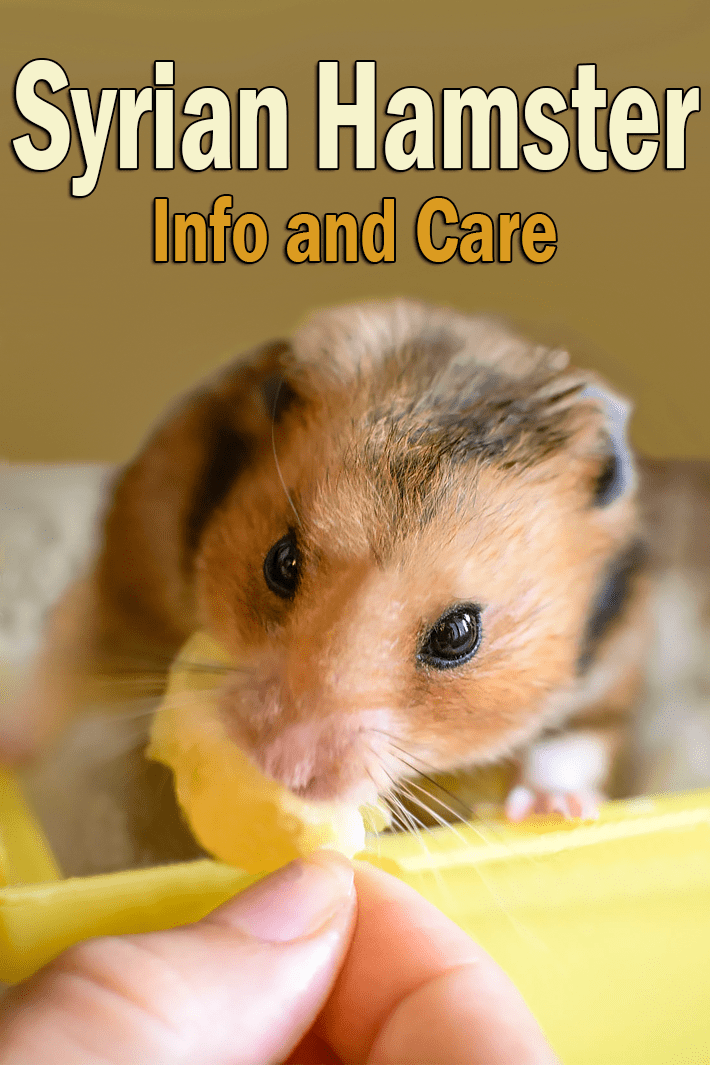
Syrian hamsters are probably the most popular hamster species kept as pets.
Origin of Syrian Hamster
Syrian hamsters originate in the Middle East (particularly Israel and Syria). Most of the Syrian hamsters available as pets or show animals today can trace their ancestry back to a mother and her 12 pups caught in Aleppo, Syria, by Professor Aharoni in 1930. The Syrian hamster was thought to be extinct in the wild as no sightings had been made of wild Syrian hamsters since the 1980’s. However expeditions in 1997 and 1999 found some wild Syrian hamsters. 19 were caught and now form the nucleus of a captive breeding programme in Germany. The wild Syrian hamster is currently classified as endangered.
Description
The Syrian Hamster is generally about 5 ½ inches (13 cm) in length, although some can be little larger. Females are often larger than the males. They are stocky animals with large eyes, tulip shaped ears, and a very short tail. The Syrian hamster is sometimes known as “the Golden Hamster”. The original wild color of the Syrian hamster is golden brown ticked with black on the upper two-thirds of the body. The belly fur is white with a grey undercoat. They also possess black cheek flashes and cheek-pouches that can carry a large amount of food to store back in their burrows. In the wild and in captivity they are fiercely territorial and will attack any other hamster that ventures into their space. In the wild the female will only tolerate the male briefly for mating. She will attack him at all other times. In the wild and in captivity Syrian hamsters are solitary animals and must be housed on their own.
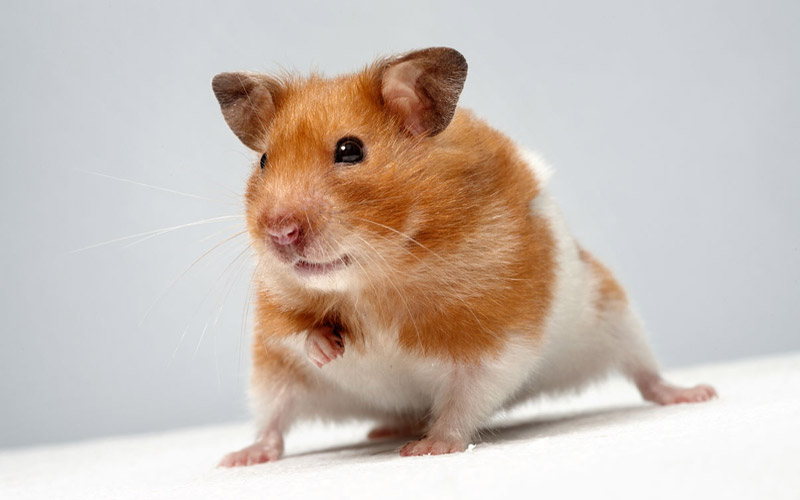
Coat Types
Syrian hamsters are bred in four different coat types – Shorthaired, Longhaired, Satin and Rex. The Longhaired Syrian is a lovely animal, but it is only the male who develops a really long coat. The male longhaired Syrian’s coat often grows to 3 or 4 inches long – some have even had longer coats than this. The long coat of the male Syrian creates a “skirt” of hair around their back end. In contrast, female longhaired Syrians just look fluffy. The Satin Syrian has a very beautiful glossy sheen to the coat. Some of the hair shafts are hollow creating the ultra shiny coat. Two Satin Syrians should not be bred together as they will produce either bald hamsters or hamsters with sparse coats. The Rex hamster looks as though its whiskers and coat have been crimped.
A Note About the Care of Longhaired Syrians
Longhaired male Syrian hamsters do need a bit of special care. Their long coats should be groomed with a toothbrush to prevent matting (or very gently with a flea-comb as not to scratch their skin). This should be done about twice a week. One of my longhaired males used to sit on my lap with his back feet stretched out while I brushed his coat – some Syrian hamsters love being brushed.
If you have a longhaired hamster that does not like being brushed and the hamster is not being shown it is probably best to trim the coat gently with round -ended scissors back to about an inch (2.5cm) in length. If the hamster does not like being brushed and is being shown take a little time every couple of days just to gently brush a tiny bit of coat and offer a really tasty treat as a bribe! Eventually the hamster will associate brushing with treats and will tolerate the toothbrush.
Longhaired Syrians should not be given a wheel as they get their coats tangled up in the wheel causing considerable distress and possible injury.
Colors and Patterns
Many new colors were developed in Syrian hamsters during the latter part of last century. Commonly available colors include Golden, White, Cream, Cinnamon, Sable, Black and Silver Grey.
The Syrian hamster is also bred with patterned coats. These patterns are the Banded, Dominant Spot, Tortoiseshell and White, Tortoiseshell, and Roan. The Banded Syrian has a band of white around its middle. The rest of the hamster can be any of the available colors. The Dominant Spot Syrian hamster is a very attractive creature which has even patches of color on a white ground. The Tortoiseshell has patches of color mixed with patches of black, and in the case of the Tortoiseshell and White with patches of white as well. The Roan Syrian has a coat where the color is mingled with white hairs to give “flecked” look.
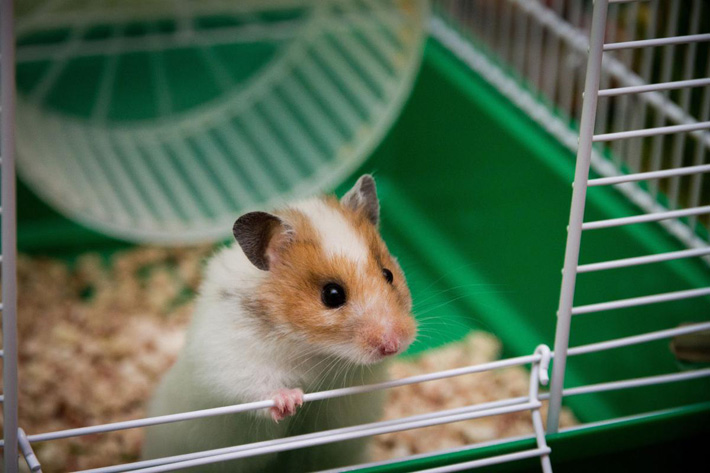
Housing
Syrian hamsters are solitary animals and must be housed on their own. It can be very confusing to see Syrian hamsters housed together in a pet shop or at a breeder’s establishment and to then be told that they must be kept on their own. However, the Syrian hamsters sold in pet shops or kept together in a breeder’s cage are youngsters under 8 weeks of age. After this age Syrian hamsters start to squabble and these squabbles eventually lead to very nasty fights.
Syrian hamsters should be housed in as big a cage as possible. They are large active animals and need space to move around. The RSPCA recommend that the minimum size of cage for a Syrian hamster should be 75cm x 40 cm x 40 cm. (29 ½ inches x 15 ¾ inches x 15 ¾ inches). There are a number of different companies which manufacture cages suitable for Syrians. Some cages designed for rats, such as the Ferplast Mary cage, are very suitable for Syrians. Many cages have plastic tunnels attached. These can lead to problems with poor ventilation and with the diameter of the tubes – some Syrians grow too large to fit through some of these tubes comfortably.
Syrian hamsters can be kept in barred cages such as those made by Ferplast, Perfecto glass tanks, and glass aquariums with tight fitting mesh and wood lids. Substrates can include wood-shavings, Carefresh, white paper bedding, and Aspen bedding. Syrian hamsters then need material to create a nest to sleep in. Hay is useful for bedding as the hamster can eat it as well as use it for bedding, but care should be taken as hay can carry mites. Shredded paper and torn up paper tissues make excellent hamster nesting material.
Please do not use the cotton wool type of nesting material sold by many pet shops. This can cause impactions in the hamster’s cheek pouches, and, if it is swallowed, can cause blockages in the hamster’s intestines.
Syrian hamsters need lots of attention and they can become very attached to their owners. When their owners are not able to spend time with them, they need to be provided with lots of things to do. A bored hamster is an unhappy hamster, so provide your hamster with lots of toys. Toys suitable for Syrian hamsters can include wheels, which they love (not for longhairs), wooden log rolls (check carefully for any sharp bits in the wood), cardboard tubes, cardboard boxes such as cereal boxes, and ceramic and plastic houses. Your local pet shop or garden centre will often have a good selection of toys for you to choose from.
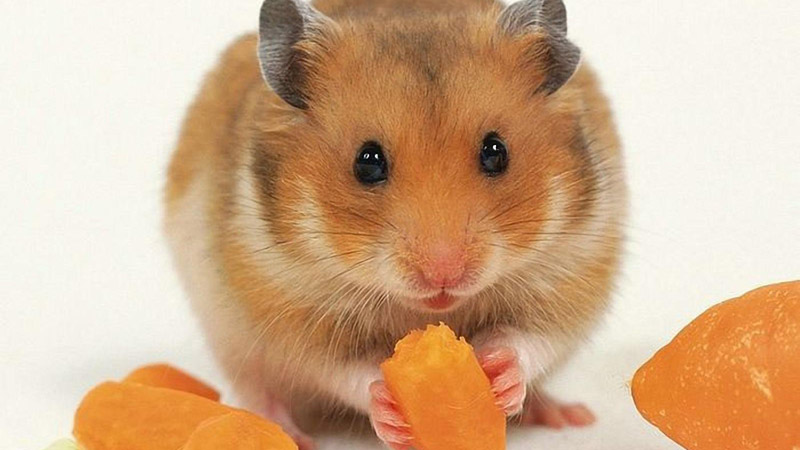
Feeding
Syrian Hamsters are omnivores. This means that they need both meat and vegetable elements in their diets. In the wild their diet consists of grasses, seeds , and the occasional insects. These needs can be met in captivity by feeding a good quality hamster mix, and fresh vegetables. A little cooked chicken or complete dry cat food can be added to the hamster’s food a couple of times a week.
Syrian hamsters should never be given as these are too acidic, but can be given a wide variety of fruit and vegetables. Examples include:
- Broccoli
- Cucumber
- Carrot
- Cauliflower
- Dandelion leaves (well washed and dried with a kitchen towel) – hamsters love these!!
- Kale
- Apple
- Carrot
Pregnant or nursing Syrians, pups and elderly or invalid animals will relish some milky porridge, chopped boiled egg or scrambled egg. Syrian hamsters also benefit from a dog biscuit in their cages to gnaw on to help wear their teeth down. Mineral blocks and salt licks are also beneficial.
Sexing
Young Syrian hamsters can be sexed by looking at the distances between the two genital openings. The distance between the male’s anus and genitalia is twice that of the females.
Breeding
Syrian hamsters are able to breed at the age of 4 weeks. The male pups should be removed from their mothers and sisters by this age. The female Syrian comes into season every 4 days. A female Syrian hamster will indicate that she is ready to mate by standing stock-still, with her tail and rump up in the air. If she is in season she will “stand” for the male. If she is not she will attack him. To mate the hamsters place the male and female Syrian in a neutral space – such as a cardboard box- or in the male’s cage.
NEVER put the male in the female’s cage – she will attack him, and possibly cause serious injury. If the female is “standing” leave them together for about 20 minutes. (It is best to supervise them in case the female decides that she has had enough and attacks the male). Then return each hamster to its own cage.
The female has a gestation period of just 16 days, one of the shortest gestations known in mammals. The pups are born naked, blind, and helpless. Do not disturb the mother for the first two weeks as she may kill her pups. Just change her food and water as normal and leave her in peace.
The pups develop very quickly. By fourteen days of age the pups are sampling food and water, and, much to mum’s disgust, are exploring the cage. The mother will often be seen pulling a pup back into the nest by its leg or tail alongside protest squeaks from the pup. Don’t worry about this – it’s perfectly normal behavior, and, contrary to how it looks, mum is not harming her pups. The pups can be handled when they are fourteen days old. At first it is perhaps best to remove the mother from the cage as she may be over protective if she sees you trying to pick up her pups. Place her in a travel box with a tasty treat. Rub your hands in the bedding so that you have the pup’s smell on you. This helps the pups to accept you a friend rather than foe. Then gently pick up each pup, one by one, with your hands over the bedding. The pups will be nervous and jumpy at this stage so it is best to only have your hands a few inches above the bedding so that the pup doesn’t have far to fall if it makes a break for it! After you have handled all of the pups return the mother to the cage. She will patrol her cage and investigate each of the pups, and then should settle down. Repeat this daily and the pups will soon be tame.
Male pups need to be separated from their mother and sisters when they are 3 ½ to 4 weeks old. Female pups can stay with their mothers until they are 5 or 6 weeks old. After this time the mother will starting to get irritable with her youngsters. The pups will have to be separated into individual accommodation if they have not been re-homed by 8 weeks of age.

Health
For small creatures like Syrian Hamsters many illnesses are potentially serious. If you have any worries about your hamster’s health please consult your vet without delay.
Many Syrian hamsters are robust little animals that never experience a day’s illness in their lives, but Syrian hamsters are prone to certain conditions. One of these conditions is Wet Tail. This condition is thought to be stress-induced. It is often seen when the hamster has just come from a pet shop or has just been weaned from its mother. A hamster with Wet Tail suffers from a very nasty form of diarrhoea. The diarrhoea is foul -smelling, contains mucus, and makes the whole of the hamster’s back end wet and foul-smelling – hence the condition’s common name. This condition has a 7 day incubation period, so it is best to quarantine any new Syrian hamster for a fortnight.
Many hamsters that contract this condition die. Tetracycline antibiotics can help, but not in all cases. The hamster needs to be kept warm and dry, and hydrated. Dehydration kills more hamsters with this condition than anything else. Electrolyte solutions (available from your vet) can help.
Wet Tail is highly infectious to other hamsters. Keep the sick hamster isolated from any other hamsters and wash your hands very thoroughly after handling the sick animal. If your hamster recovers from Wet Tail it is best not to breed from it as the tendency to contract Wet Tail is thought to be inherited.
Another condition that has been causing considerable concern in the hamster community for a number of years is the Hamster Papova virus. This is an infectious lymphoma which is thought to be spread through the urine of an infected hamster. There is no cure and the hamster often dies. Symptoms include warty growths under the chin of the Syrian hamster which spread across the body and aggressive internal tumours (often in the abdomen) which grow very quickly.
Syrian hamsters can catch colds, and stomach bugs from their owners, so if you are suffering from one of these maladies wash your hands very thoroughly before changing your hamster’s food and water and don’t handle your hamster until you are better.
Lifespan
Syrian hamsters live about 2 years on average, although some Syrian hamsters can live a little longer.
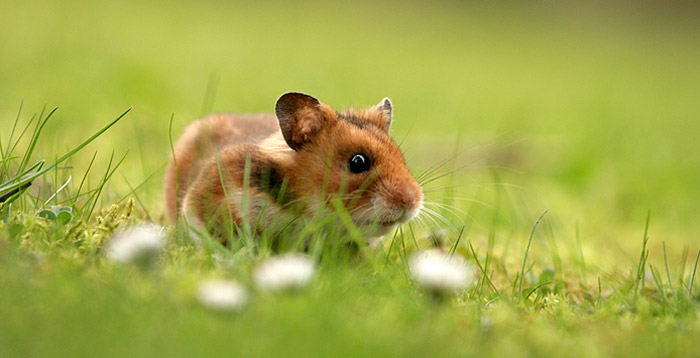


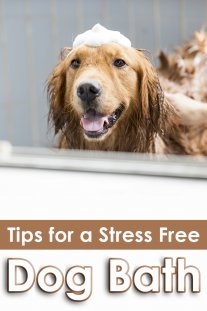

Leave a Reply